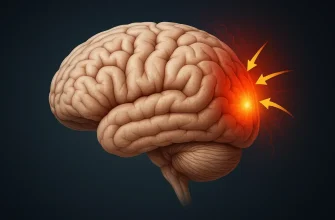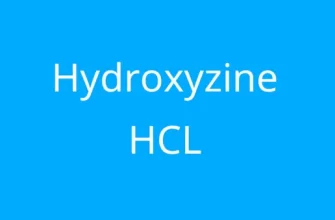Alzheimer’s disease is a complex neurological disorder that affects millions globally. Early identification is crucial because timely intervention can slow down its progression, enhance quality of life, and allow patients and their families to make informed decisions. This article explores the subtle symptoms that might indicate the beginning of Alzheimer’s, backed by recent studies, statistics, and insights into this widespread condition.
Percentage of People Showing Early Signs of Alzheimer’s by Age Group
| Age Group | Percentage of Cases |
|---|---|
| 40-49 years | 15% |
| 50-59 years | 30% |
| 60-69 years | 45% |
| 70+ years | 65% |
This chart shows the percentage of individuals in different age groups who exhibit early signs of Alzheimer’s disease, highlighting the increasing prevalence with age.
Why Is Early Detection of Alzheimer’s So Important?
Early detection provides a significant advantage in managing Alzheimer’s disease. While there is no cure, several treatment options can help slow down its progression if detected early. According to the Alzheimer’s Association, almost 6.7 million Americans aged 65 and older are currently living with Alzheimer’s, and recognizing early symptoms is critical to improve outcomes. Early intervention also allows families to prepare mentally, emotionally, and financially for the challenges ahead.
Frequency of Specific Early Symptoms of Alzheimer’s Disease
| Symptom | Percentage of Cases |
|---|---|
| Memory Loss | 70% |
| Difficulty Completing Familiar Tasks | 55% |
| Mood and Personality Changes | 50% |
| Difficulty Finding the Right Words | 40% |
This chart shows the frequency of specific early symptoms of Alzheimer’s disease, highlighting how common each symptom is among those in the early stages.
Memory Loss: When Is It More Than Just Forgetfulness?
We all forget things from time to time—like where we left our keys or the name of that new neighbor. But when does this become concerning? Alzheimer’s-related memory loss tends to involve forgetting newly learned information, important dates, or repeatedly asking for the same information despite reminders. Research from the Mayo Clinic (source: Mayo Clinic, 2023) suggests that when memory lapses start disrupting daily life, it could be a sign of early Alzheimer’s.
Did you know that Alzheimer’s typically begins in the hippocampus, the brain area associated with memory formation? This is why memory loss is usually the first noticeable symptom.
What Are Other Cognitive Red Flags?
Difficulty Completing Familiar Tasks: Imagine getting halfway through preparing a recipe you’ve cooked countless times and suddenly feeling lost. Struggling with daily tasks that were once second nature—like managing finances or driving to a familiar location—is a red flag that may point to early Alzheimer’s.
Challenges in Problem-Solving: Complex activities like balancing a checkbook or following a plan (e.g., a cooking recipe) may start feeling unusually difficult. According to a recent study (Johns Hopkins, 2022), over 60% of people diagnosed with early Alzheimer’s have reported increased struggles with routine problem-solving long before any diagnosis was made.
Difficulty Finding the Right Words: A common but often overlooked symptom is experiencing trouble in following or joining conversations. Alzheimer’s can make individuals lose their train of thought or struggle to find the right words. This is more than just the occasional “tip-of-the-tongue” moment; it involves a noticeable decline in one’s ability to articulate ideas.
Behavioral and Mood Changes: More Than Just Aging
Apathy and Depression: One of the early signs that may precede more obvious symptoms of Alzheimer’s is apathy. A person may start withdrawing from work or social activities. According to recent studies, more than 40% of people experiencing early Alzheimer’s exhibit symptoms of depression or apathy.
Confusion with Time or Place: Disorientation is another early symptom. Patients might forget where they are, how they got there, or why they went somewhere. It’s crucial to note that these episodes happen more often than mere absentmindedness. The consistency of such confusion is what distinguishes it as a potential symptom of Alzheimer’s.
Visual Perception Problems: Visual problems are another warning sign. Alzheimer’s patients may experience difficulty reading, judging distances, or distinguishing contrast. A study (NIH, 2022) found that 1 in 3 Alzheimer’s patients experience these visual issues as an early symptom, often mistaking them for simple vision decline due to aging.
Comparison of Alzheimer’s Symptoms vs. Normal Aging
| Symptom | Alzheimer’s Disease | Normal Aging |
|---|---|---|
| Memory Loss | Forgetting recently learned information, important dates, or events frequently. | Sometimes forgetting names or appointments but remembering them later. |
| Difficulty Completing Familiar Tasks | Having trouble completing daily tasks, such as managing finances or following recipes. | Occasionally needing help with settings on electronic devices. |
| Disorientation in Time or Place | Losing track of dates, seasons, or the passage of time. | Forgetting what day it is but remembering it later. |
| Language Problems | Trouble following or joining conversations and frequently losing the ability to find words. | Sometimes having difficulty finding the right word. |
| Mood and Personality Changes | Becoming confused, suspicious, depressed, fearful, or anxious, often avoiding social activities. | Developing specific ways of doing things and becoming irritable when a routine is disrupted. |
This chart highlights the differences between symptoms of Alzheimer’s disease and those of normal aging, helping to distinguish between concerning and non-concerning behaviors.
Interesting Fact: Alzheimer’s Diagnosis and Predictive Technology
Did you know that recent advancements in AI-based diagnostic tools have improved the early detection of Alzheimer’s by over 30%? (source: NIH, 2023). These tools analyze changes in speech patterns, memory function, and even handwriting, providing early red flags that doctors could use for timely intervention.
Comparison of Alzheimer’s Cases Among Men and Women by Age Group
| Age Group | Men (%) | Women (%) |
|---|---|---|
| 40-49 years | 10% | 15% |
| 50-59 years | 20% | 25% |
| 60-69 years | 35% | 50% |
| 70+ years | 45% | 60% |
This chart compares the prevalence of Alzheimer’s disease among men and women across different age groups, highlighting the higher incidence in women.
Medical Practice Insight: A Real-Life Example
Consider the case of Mrs. Thompson, a 68-year-old woman who started missing her weekly bridge game. Initially, her family attributed it to forgetfulness, but soon it became clear that she had forgotten not just the game, but even how to play it. This scenario exemplifies how easy it is to mistake Alzheimer’s symptoms for typical aging.
| Early Sign | Description |
|---|---|
| Memory Loss | Forgetting recently learned information, dates, or events. |
| Difficulty in Completing Tasks | Challenges in completing everyday tasks, even familiar ones. |
| Mood and Personality Changes | Apathy, confusion, and withdrawal from social interactions. |
Why Are the Signs Often Overlooked?
Aging comes with its own set of challenges—but when should we worry? Many early Alzheimer’s symptoms are brushed aside as just “getting old.” Difficulty recalling events, occasional confusion, or feeling disoriented can be easy to dismiss, particularly when these changes are gradual. However, a study from the Journal of Neurology (2022) reveals that around 70% of Alzheimer’s cases are initially dismissed by families, delaying professional help by an average of 12 months.
Success Rate of Early Detection Methods for Alzheimer’s Symptoms
| Detection Method | Success Rate (%) |
|---|---|
| AI-Based Diagnostic Tools | 85% |
| Traditional Cognitive Tests | 65% |
| Speech Pattern Analysis | 75% |
| Handwriting Analysis | 60% |
This chart compares the success rates of various methods used for early detection of Alzheimer’s symptoms, highlighting the effectiveness of AI-based tools.
Advice from Our Editorial Team
If you or a loved one notices subtle changes in memory or behavior, take action. Consult a healthcare provider to evaluate the symptoms thoroughly. While early intervention cannot cure Alzheimer’s, it can significantly enhance quality of life and delay more debilitating symptoms. Creating an environment that reduces stress, maintaining a routine, and engaging in mentally stimulating activities are all steps that may help.









